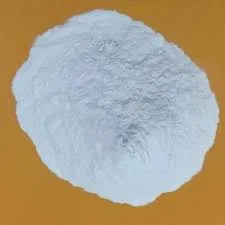
Oct . 21, 2024 02:01 Back to list
MHEC Production Insights from Leading Methyl Hydroxyethyl Cellulose Manufacturers
The Role of Methyl Hydroxyethyl Cellulose in Modern Applications
Methyl Hydroxyethyl Cellulose (MHEC) is a versatile and commonly used cellulose ether with a wide range of applications, particularly in construction, personal care, pharmaceuticals, and food industries. As a product derived from natural cellulose, MHEC offers several beneficial properties, making it a preferred choice for manufacturers and formulators across various sectors.
Chemical Structure and Properties
MHEC is synthesized by the etherification of cellulose, which involves modifying the hydroxyl groups on the cellulose backbone with methyl and hydroxyethyl groups. This modification enhances the solubility of cellulose in water and alters its rheological properties. MHEC is typically a white or off-white powder that can easily dissolve in cold water to form a clear, viscous solution.
The unique combination of properties, including thickening, binding, film-forming, and water-retention abilities, makes MHEC an essential additive in many formulations. It is non-toxic, biodegradable, and has low allergenic potential, aligning well with the global trend towards sustainable and environmentally friendly products.
Applications in Construction
One of the most significant applications of MHEC is in the construction industry, where it is predominantly used in cement-based products such as tile adhesives, plasters, and grouts. MHEC increases the workability of these materials, making them easier to apply. It also enhances water retention, which is crucial for ensuring proper hydration of cement during the curing process, thereby improving the overall strength and durability of the finished product.
Additionally, MHEC acts as a stabilizer, preventing sagging and separation in applications like wall putty and self-leveling compounds. Its use leads to higher performance in terms of adhesion and reduced shrinkage, which are critical factors for long-lasting constructions.
Personal Care and Cosmetics
mhec-methhyl hydroxyethyl cellulose manufacturer

In the personal care and cosmetics sector, MHEC serves as a thickener and emulsifying agent. It is used in a wide range of products, including lotions, creams, shampoos, and conditioners, providing the desired texture and stability. MHEC contributes to the sensory characteristics of these formulations, giving them a smooth and luxurious feel upon application.
Moreover, MHEC helps to enhance the moisture retention ability of skin care products, which is vital for maintaining skin hydration and elasticity. Its film-forming properties also allow for the creation of products that provide a protective barrier on the skin, which can improve the overall efficacy of active ingredients within the formulation.
Pharmaceutical Applications
In pharmaceuticals, MHEC is used as a binder and thickening agent in oral drug formulations. It is especially important in the development of controlled-release formulations, where it helps to regulate the release of active ingredients over time. By modifying the viscosity and flow properties of suspensions and emulsions, MHEC plays a crucial role in enhancing the stability and bioavailability of pharmaceutical products.
Furthermore, MHEC is increasingly being explored for use in drug delivery systems, as it can be engineered to achieve specific release profiles that optimize therapeutic outcomes.
Food Industry
The food industry also benefits from the unique properties of MHEC, where it is employed as a thickening agent, stabilizer, and emulsifier. It is found in products such as sauces, dressings, and dairy products, improving texture and mouthfeel while providing stability and preventing separation. MHEC’s ability to retain moisture can also contribute to extended shelf life and better quality of food products.
Conclusion
In summary, the versatility of Methyl Hydroxyethyl Cellulose positions it as a valuable ingredient across various industries. Its availability through numerous manufacturers worldwide ensures that formulators have access to high-quality MHEC that meets specific application needs. As trends continue to shift towards sustainable and efficient solutions, the demand for MHEC is expected to grow, highlighting its crucial role in both current and emerging applications. The ongoing research and development in refining MHEC derivatives only solidify its position as a cornerstone ingredient in modern formulations.
-
Why HPMC is a Key Additive in Wall Putty Formulations
NewsAug.05,2025
-
Redispersible Powder in Decorative Renders: Function Meets Finish
NewsAug.05,2025
-
Redispersible Powder for Interior Wall Putty: Smooth Results Every Time
NewsAug.05,2025
-
HPMC’s Water Retention Capacity in Dry Mortar Applications
NewsAug.05,2025
-
HPMC Factory Contributions to Liquid Detergents
NewsAug.05,2025
-
How HPMC Factory Products Change Detergent Textures
NewsAug.05,2025







